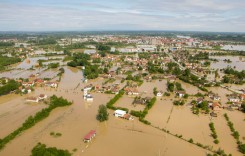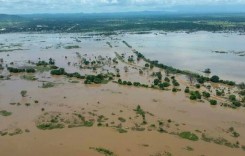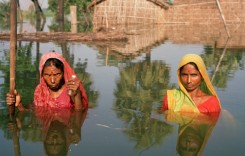Over 125,000 people have been displaced by recent flooding across 17 countries in West and Central Africa with more rain expected in the region until October, the UN said.

The African Centre of Meteorological Application for Development (ACMAD) reported above average rainfall over West Africa during June 2022 and across western central Africa during July 2022, influenced by la Niña conditions. The seasonal forecast stated that, “Normal to above average precipitation is expected over central Sahel, northern CAR (Central African Republic), northern Cameroon and northern Guinea Gulf countries in the season JJA (June, July, August) 2022. Above to normal precipitation is expected over central Sahel, northern CAR, northern Cameroon during the season JAS (July, August, September).
The UN’s Office for the Coordination of Humanitarian Affairs (OCHA) said that seasonal rains and floods are severely impacting countries in West and Central Africa including the Republic of Congo, Chad, Liberia, Nigeria, Niger, Democratic Republic of Congo, Gambia, Mauritania, the Central African Republic, Guinea, Cote d’Ivoire, Senegal, Ghana, Cameroon, Mali and Burkina Faso.
As of 16 August 2022, seasonal rains and floods had affected 731,000 people in the region, taking significant toll on human life, property, land, and livestock. Over 250 people have lost their lives and many more have been injured, while some 35,000 houses have been destroyed leaving 126,000 people homeless.
This year’s additional shocks of extreme weather events have pushed vulnerable families deep into crisis, OCHA said. Many of the affected regions were already struggling with high levels of food insecurity, malnutrition, instability, and violence. Floods have impacted hygiene and sanitation and increased the incidence of water-borne diseases. Moreover, floods increased displacement into overcrowded settlement camps, where diseases spread easily.
The heavy rains are expected to continue into October. Analysis carried out by OCHA showed countries with the highest risks of flooding based on the rainfall forecast for July to October 2022 include Chad, Côte d’Ivoire, The Gambia, Ghana, Guinea, Guinea Bissau, Mali, Niger, Nigeria, Senegal and Sierra Leone. Many of those countries have a significant number of people residing in areas with high floods exposure, as shown in the map below.

West Africa climate expert, Gilbert Kouamé, told FloodList that multiple interrelated drivers are responsible for the unfortunate situation in West Africa, and that the need for adaptation implementation in the region is urgent.
The rain is a result of the combined effect of change in rainfall patterns with a trend towards more intense rainfall in West Africa due to climate change and an ongoing la Niña event often linked to above average rainfall in the region.
“These are the drivers behind the heavy rainfall recorded in Accra on 24 May, the 100-year rainfall event in Abidjan on both 21 and 30 June, national record rainfall in 34 years recorded in Banjul on 31 July and extreme rainfall in Dakar on 05 August,” Mr Kouamé said.
Massive population growth especially in (urban) floodplains along with intense and uncontrolled urban expansion and planning which lead to informal settlements especially in flood-prone areas are also key drivers, Gilbert Kouamé added. Furthermore poorly planned drainage networks, which are undersized, unconnected, and improperly channelled, as well as land use changes with development of impervious areas, cause much of the rainfall to run off on the surface.
In the wake of the recent deadly floods and landslides in Freetown, capital of Sierra Leone, on 28 August, president of the country Julius Maada Bio said, “years of poor urban planning and mismanagement of the city’s resources are an enormous contributor to flooding across Freetown.”
Gilbert Kouamé also pointed to the negative influence of deforestation in the region, explaining that “deforestation patterns that can strongly modulate convective activities and make people highly vulnerable to landslides and flash floods. This is really active in fast-growing cities such as Freetown and Monrovia”.
Studies done earlier this year found that deforestation is causing more storms in West Africa.








